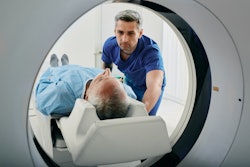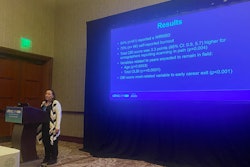More than one-third of radiologists around the world experience burnout, according to an analysis published July 17 in the American Journal of Roentgenology.
A team led by Stella Kang, MD, from NYU Langone Health in New York City found that validated quantitative tools such as the Maslach Burnout Inventory (MBI), the Stanford Professional Fulfillment Index (PFI), and the Validated Single-Item Instrument showed radiologist burnout rates of between 34% and 39%.
“Standardized instruments for prevalence alongside multidimensional profiles capturing experiences may better characterize radiologist burnout, including change over time,” Kang and colleagues wrote.
Burnout continues to negatively affect radiology departments, impacting physician well-being, care delivery, and health outcomes. The 2023 Medscape Physician Burnout and Depression Report indicated that radiologists have a high burnout prevalence of 54%.
Several validated quantitative tools have been developed in recent years to accurately measure burnout among clinical staff, including radiologists and technologists. However, the researchers pointed out that variation among these models could produce variable outcomes.
Kang et al evaluated radiologist burnout rates globally and dimensions of burnout as reported by different validated instruments. Their goal was to provide guidance on best practices to characterize burnout.
The analysis included 57 studies with data from 11,405 radiologists published between 1990 and 2023. Out of these, the researchers used 43 studies in a meta-analysis of burnout prevalence using random effects models. Most of the studies were conducted in the U.S. (n = 39). Burnout reported in the total studies ranged from 5% to 85%.
With the MBI, burnout prevalence varied depending on the instrument version. Among MBI subcategories, the prevalence of emotional exhaustion was 54%, depersonalization was 52%, and low personal accomplishment was 36%.
Other validated burnout instruments demonstrated less diverse findings. Studies using the Stanford PFI yielded a burnout prevalence of 39%, while the Validated Single-Item instrument yielded 34%.
The researchers also reported increasing emotional exhaustion and a sense of depersonalization between 1996 and 2023. They suggested that these findings could reflect stressors such as economic contractions, increased imaging volumes, and the COVID-19 pandemic.
Finally, among studies using these three instruments, stratified analysis revealed no statistically significant differences in overall burnout prevalence between the following: studies conducted within versus outside of the U.S. (39% vs. 35%. p = 0.7); studies conducted before versus after the COVID-19 pandemic (37% vs. 40%, p = 0.65); and studies of trainees versus attending or faculty radiologists (45% vs. 32%, p = 0.17).
The authors suggested that qualitative evaluation of sources of stress, anxiety, or frustration, and the impact of workload on decision-making and attitude could identify gaps in workflow or communication.
They also recommend that for rapid assessment of changes in burnout or the impact of interventions, the Stanford PFI or the Validated Single-Item Instrument should be used.
“Presentation of separate burnout subscale values alongside an overall burnout prevalence estimate or the use of burnout profiles would help characterize burnout experiences to inform development of targeted interventions,” the authors wrote.
The full analysis can be found here.



















